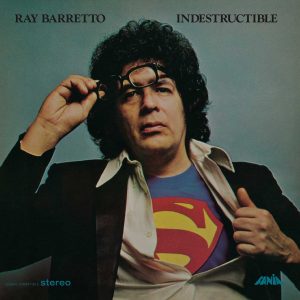1964 was a watershed year for Freddie Hubbard. A technically gifted young trumpeter from Indianapolis who played with swagger, personality, and plenty of attitude, Hubbard had arrived in New York six years earlier aged 20, quickly shaking up the Big Apple jazz scene with his electrifying horn playing. His rise to fame was meteoric: So much so that by 1964, he had eight solo albums under his belt – six for Blue Note and two for Impulse! – and had spent the previous two-and-a-half years as Lee Morgan’s replacement in drummer Art Blakey’s renowned “Hard Bop Academy,” The Jazz Messengers.
Despite his fluency in straight-ahead jazz, Hubbard could also play in a more progressive jazz style. He featured on landmark recordings by two of jazz’s most eminent visionaries: Ornette Coleman’s Free Jazz and John Coltrane’s Ole Coltrane. By contrast, Hubbard’s own recordings were fairly conservative. Until 1964, that is. In May – three months after he contributed to another seminal avant-garde recording, Eric Dolphy’s Out To Lunch – the 26-year-old trumpeter had quit The Messengers and assembled his first working band consisting of young, like-minded musicians. The move resulted in a trip to Van Gelder Studio to record Breaking Point!, Hubbard’s most adventurous and forward-looking album to that point.
Listen to Freddie Hubbard’s Breaking Point! now.
“Who wants to go on duplicating what went on before?” he told Melody Maker magazine at the time. The make-up of his band mirrored his musical curiosity, he explained to liner note writer Nat Hentoff. “I dig the young guys who are trying to push ahead,” he said. “These fellows in my group are my own special cats, and we’re trying to say something a little bit different. Not just because it is different, but because jazz, like the world, has to progress.”
Hubbard’s band consisted of fellow Indianapolian James Spaulding, nine months Hubbard’s senior, who alternated between alto sax and flute. On piano, Hubbard brought in Brooklynite Ronnie Matthews, a devotee of Horace Silver. The rhythm section consisted of Eddie Khan, a former saxophonist-turned-bassist who had made his name on Jackie McLean’s One Step Beyond, and a 21-year-old drum prodigy from Chester, Pennsylvania named Joe Chambers. The recording session was Chambers’ first. “It was very exciting,” Chambers explained in 2017, “but I wasn’t nervous because we had played the music live and were familiar with all the tunes.”
Breaking Point!’s title track is a curious marriage of tension and release, where melodious calypso cadences fronted by bright, sunny horn lines, are juxtaposed with jarring fanfares over an atonal, avant-garde soundscape that crackles with fiery, pent-up energy.
Also pushing the jazz envelope is “Far Away,” a driving modal piece with Latin infections featuring Spaulding’s darting flute melodies and a thoughtful Chambers drum solo. After probing the boundaries of jazz with the lengthy first two tracks, “Blue Frenzy” is a more straight-ahead offering; a waltz-time blues defined by infectious horn riffs, while the hard-swinging “D Minor Mint” taps into Hubbard’s hard bop roots.
The album’s most haunting track is saved for last: the elegant Joe Chambers-penned ballad “Mirrors.” “It was a tune written for a lesson and to demonstrate what was known as ‘mirror writing,’ where themes are juxtaposed and reversed,” explained Chambers in 2017. “I wrote it while I was studying theory and composition at the American University when I lived in Washington, DC.”
Breaking Point! represented a high water mark not only in Freddie Hubbard’s Blue Note tenure but also in his career overall. He seemed driven by a desire to break out of his hard-bop comfort zone and discover a new musical landscape. The striking new ideas and tone colors contained therein are undeniable.




